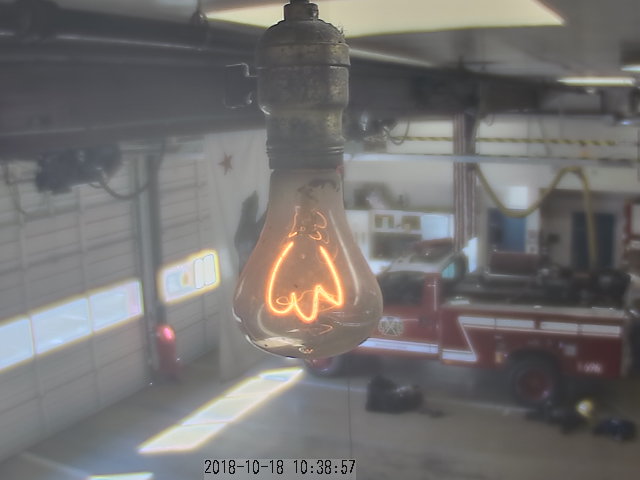New Light Bulb Efficiency Standards Will Continue to Power Incandescents
Reports of the death of incandescent light bulbs have been greatly exaggerated. (With apology to Mark Twain)
Federal regulations going into effect tomorrow, January 1, 2014, will require light bulbs to deliver the same amount of light using 30% less energy. Most manufacturers will meet the new rules by improving the efficiency of traditional incandescent light bulbs. to deliver 60 watts of light using no more than 43 watts of electricity.

A live-cam photo of a light bulb at the Livermore-Pleasanton (CA) Fire Dept. in operation since 1901.
LED and CFL bulbs already meet the new standards for 60-watt equivalent bulbs because they use only 9 to 13 watts of power to produce the same amount of light — that’s 70 to 90% less energy. LEDs and CFLs cost more to purchase, but energy savings and extended bulb life make the newer technology less expensive over the product life cycle.
The Energy Independence and Security Act as signed into law by President George W. Bush in December 2007 will reduce energy consumption and associated carbon emissions from coal-burning power plants. Only 10% of the energy used by traditional light bulbs is converted into light while the other 90% is wasted as heat.
The new regulations allow any type of lighting technology so long as each 60-watt equivalent bulb produces 800 lumens of light using 43 watts of electricity or less. Lumens measure a quantity of light produced while watts measure energy consumed. Lumens per watt should be the your guide when shopping for new light bulbs.
Other light bulb sizes are also required to meet new standards. Use the follow chart to guide bulb selection based on light output in lumens for any lighting technology. The more lumens a bulb produces means more light. Lower wattage means the bulb consumes less energy.
Two other important characteristics are color temperature and color rendition. Most people who prefer the warm reddish glow of traditional incandescent bulbs should select a color temperature between 3200K and 3800K. Daylight bulbs have a color temperature between 5000K and 5500K.

A Huntsville resident stocked up on incandescent bulbs, fearing they would no longer be available after January 1, 2014.
The color rendition index (CRI) of a bulb refers to color accuracy. Daylight has a CRI of 100. Most incandescent bulbs have a CRI around 80 while a few high quality LEDs feature a CRI of 90 or better. The AlabamaWISE store has a listing of the best and most affordable LED bulbs.
Light bulb technology, like home building technology, hasn’t changed much over the past century. New, more efficient lighting will save money for homeowners and conserve natural resources for all. Download the EPA guide on energy efficient light bulbs.


Comments are closed.